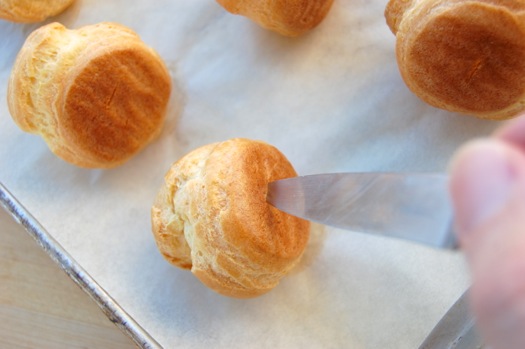The Science of Pâte à Choux

Choux is a truly ingenious invention, though it almost certainly wasn’t “invented” in the classic sense of the word. It evolved, probably through decades, maybe even centuries, of trial and error. The secret of choux is that it’s “double cooked”, a process that imbues it with some very special properties.
If you’ve made éclair or cream puff shells before, you probably recall the process. Water and butter are combined in a sauce pan and heated to the boil, at which point enough flour is added to turn the mixture into a fairly stiff paste. That paste is then cooked over low heat until it forms a ball, which is then finished by beating in several eggs, one after the other. It’s then piped and baked (the second “cooking”). Interesting. Curious. But what does it all mean?
READ ON